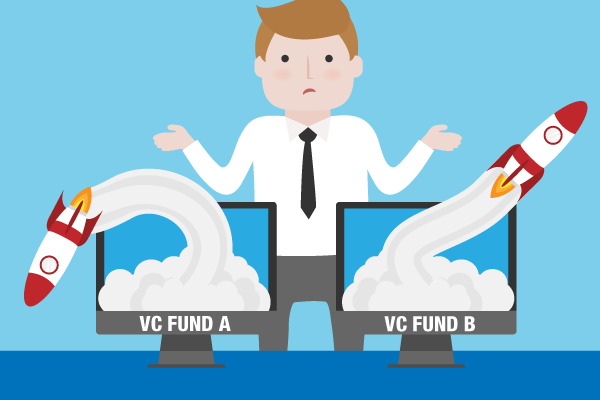Corporate Venture Capital Funds

What Every Entrepreneur Needs to Know
By Paul Asel, H. Dennis Park and S. Ramakrishna Velamuri
Entrepreneurs today have a diversity of venture financing sources they can try to tap; each has different benefits and risks. Independent venture investors (IVC), who have been around for decades, are usually the first type that comes to mind, but corporate venture capital (CVC) programmes set up by established firms are becoming increasingly popular.
These come in two varieties, internal and external, yet few entrepreneurs we interviewed for a recent study understood the differences between them. Internal funds are those that invest from the balance sheets of the corporations, whereas external funds are set up as separate legal entities, with the same structure as IVCs. With that in mind, we wanted to share some of their comparative advantages and disadvantages that we learned through our research, which included in-depth interviews with investors and investees in the US, Europe and Asia.
Start-ups have three primary motivations for seeking CVC investments: capital funding, endorsement from a reputable corporate investor, and various forms of partnerships. It is these partnerships, which might offer resources such as product testing infrastructure, manufacturing facilities, and distribution and customer service activities, that make CVCs unique. These things are often prohibitively expensive and time consuming for a start-up to build itself.
CVC programmes have a variety of different structures and practices. Thus it is important for entrepreneurs to understand how a CVC is structured as this can, in turn, affect the start-ups in their portfolio. Entrepreneurs will likely notice some differences right away. CVC funds typically invest in later stage ventures. The mortality rate for CVC programmes has been particularly high following downturns such as the ones in 2000 and 2008. According to data from the National Venture Capital Association (NVAC), for example, CVC investments fell from close to $16 billion in 2000 to approximately $8 billion in 2001 following the burst of the dotcom bubble. Internal CVC programmes are more sensitive to macroeconomic and industry cycles, while external CVCs have more consistency of purpose.
External CVC programmes generally operate in a similar fashion as IVC funds in that they manage a separate fund with fixed funding commitment and life expectancy (typically 10 years). This structure allows for more consistent investment management and greater financial autonomy from the corporation that provides the capital, with more accountability for investment performance. Their relative independence and financial motivations makes them more likely to invest in disruptive businesses that can extend or even threaten the core businesses of their corporate sponsors.
Company involvement
We found several differences in the way that internal and external CVC programmes involved their corporate sponsors. Internal CVC units generally require approval from their investment committee, including the relevant business unit, and on-going engagement with the business unit after the investment. This encourages closer strategic alignment with corporate sponsors, but it can increase potential conflicts of interest and delays in decision making which tax the limited resources of the start-up. Corporate business units are generally less involved in the investment decisions made by external CVC programmes, and often less engaged even after the investment.
External CVC personnel are generally more active with portfolio companies, and more willing to lead investment rounds and take board seats. Internal CVC units are typically 'passive investors,' following lead investors in financing rounds and often refraining from taking board seats. Board membership requires sustained executive level involvement with portfolio companies enabling board members to influence company strategy in a way that internal CVC units resist for legal liability reasons. Both internal and external CVCs typically prefer minority equity stakes below 20% in portfolio companies to avoid perceived influence that would require consolidating an investee's financial statements in the corporate's financial statements.
CVC Personnel Turnover
Internal and external CVC units have pronounced differences in how they recruit and compensate investment managers which have an effect on personnel turnover. Internal CVC units typically recruit the majority of their investment managers from their own business units and they have deep knowledge of the company's products, strategy, and procedures. External CVCs rely less on staff with prior corporate experience and instead tend to recruit investment professionals with prior financial and investment experience.
Our research indicates that turnover is higher at internal CVCs. Over a four-year period, among the CVCs in our survey internal CVCs had on average a nearly 30% higher turnover rate and external CVC personnel had on average 17% longer average tenure. Employee turnover created particular challenges according to interviewees, as it was common for champions of the investment either at the CVC or business unit to migrate to another post before strategic objectives were realized. Both external and internal CVCs cited business unit turnover as an issue but turnover within internal CVCs compounded the challenge in realizing strategic objectives.
Exit Considerations
External CVCs are generally structured with a ten year fund life similar to IVCs. While portfolio companies generally achieve orderly exits within this timeframe, the average life of a venture investment has increased to more than seven years across the venture industry. Internal CVCs have unlimited time horizons and can typically maintain their investments longer than external CVCs and continue to realize financial and strategic benefits from the association.
Several internal CVC funds view corporate investing as a window to a possible acquisition. Both IBM and Cisco cite acquisitions as one of their stated interests and view investments as a way to monitor company progress and reduce acquisition risk for those they pursue. In China, where the market in each Internet vertical is highly concentrated among the three giants – Baidu, Alibaba and Tencent – with others such as Ctrip and JD.com more focused on individual verticals, investing as an option for an eventual takeover is a more prevalent phenomenon. Where acquisition is a stated prerogative, CVCs may seek to include special investment terms that give them a right of first offer or refusal for acquisition, though promising companies are loathe to accept such terms as they can create conflicts of interest and limit future exit options.
On the other hand, many corporations are reluctant to acquire their CVC portfolio companies. They are concerned about conflicts of interest that can lead to overpaying for ventures seen as "pet projects" of their CVC managers. In addition, if corporate investors are already enjoying strategic benefits from their investees as a minority equity holder, the control premium required to acquire the business may be difficult to justify unless the portfolio company is in danger of being acquired by a competitor. Empirical evidence from other studies shows that just 3-5% of portfolio companies of CVC funds are acquired by their corporate investors.
Ultimately, entrepreneurs should look first at investor reputations and their track record for delivering strategic and financial returns. Whether a venture initiative is independent or part of an internal or external CVC should be a secondary consideration.
Paul Asel is Managing Director of Nokia Growth Partners, H. Dennis Park is an Assistant Professor of Management at Drexel University in Philadelphia, USA, and S. Ramakrishna Velamuri is Professor of Entrepreneurship at China Europe International Business School (CEIBS) in Shanghai. Their research study is titled "Creating Values Through Corporate Venture Capital Programs: The Choice between Internal and External Fund Structures". It was published in the Winter 2015 issue of the Journal of Private Equity.
This article was first published by The Economist Intelligence Unit.













